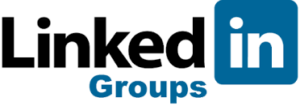Home Care CEOs have been asking for the past two years about the future of the “Digital Disruptors”; those companies who are touting the “uberization” of home care. At Leading Home Care, we’ve been tracking this trend since these technology driven home care companies came onto the scene.
Well, we got an answer this past Friday (February 24, 2017) when HomeHero, one of the earlier players in the digital disruption rugby match called it quits. Kyle Hill, one of the two founders of Home Hero back in 2013, issued a lengthy essay explaining why he and his financial partners decided to call it quits.
Key Reasons for Death of a Disruptor 
Hill wrote a detailed narrative describing what happened. Here are some key points he made in his article about the causes of the company’s failure:
- HomeHero lost it’s core identity when it was forced to terminate their working relationship with their 1099 contract caregivers.
- HomeHero lost it’s competitive advantages of price, speed, and scalability
- Their Vision had been to build the fastest, most affordable way to access quality in-home care
- They were charging clients 30 to 40% less than the industry average
- They were paying caregivers 25% higher than the industry average
- On October 15, 2015, the US DOL ruled that caregivers would qualify for overtime under the Fair Labor Standards Act
- The SEIU and the Fight for $15 Crowd had huge wins in the state of California
- The cost for live-in care doubled in California from $250 to $550 per day
- Families were forces to reduce caregiver hours or fire their agencies completely
- Seniors struggled with the continuity of care
- Caregivers saw their working hours and income reduced
As a result, HomeHero has decided to cease all operations and remove itself from the home care industry. They have announced that their intent is to focus on a new health care venture. Here’s the article.
Was this business built on bad assumptions?
In this article, Hill quoted an article he had written in August of 2014 called Ten Reasons a Marketplace for Senior Care is Inevitable. Here are the ten points, and our observation of the real facts as we know them from our research.
- Huge Market size – “$84 Billion.” While the entire market for home health, hospice, and personal in-home care may be $84 Billion, we’ve never seen any numbers near that size for the private pay marketplace. No one really knows how big it really is.
- Huge Market Fragmentation – “with 84,000 franchised agencies.” We don’t know where he got those numbers. We know there are about 70 companies selling franchises in home care, and at last count there were about 7,000 operating locations. We also estimate that there may be 13,000 to 14,000 independent agencies, and perhaps 5,000 agencies affiliated with a home health agency, hospice, or senior living community.
- Huge Number of Unsatisfied Customers – “Low trust and horrible NPS scores among brick and mortar agencies.” According to the Home Care Pulse client satisfaction management system, there are many many consumers who are very satisfied with their home care company, and would recommend it to a friend or family member.
- Huge Number of Unsatisfied Caregivers – “Agencies keep on average 50 – 60% of caregiver wages.” Well, that assumption distorts the actual numbers. According to the Home Care Pulse Home Care Benchmarking Study, the typical agency pays out 61% of it’s revenue in direct cost of care, including wages, insurance, workers compensation, unemployment insurance, and travel expenses. That leaves 39% gross margin. HomeHero wanted to operate on 15 – 20% gross margin.
- Highly Recurring Needs – “The average client requires care 4 to 5 days a week, 5 to 6 hours day.” Yes, that assumption is consistent with our data, although we see a wide range if average hours per week per client among the agencies we work with.
- Ability To Handle Payments – With customer lifetime values ranging from $12-15,000 and a recurring margin of 15-20% (a steep discount from industry average 50-60%), the economics make a lot of sense. Again, the real data show industry average gross margin of 39%, not 50 – 60%.
- Low Backdoor Risk – “Unlike cleaners, nannies, and web designers, it’s difficult for caregivers to get consistent work without the help of an agency.” Oh really? Most of the home care agencies we work with identify the independent caregiver as their biggest competitor. While the true size of this competitor is unknown, it is seen and felt by many agencies.
- The Network Effect – “The more caregivers sign up on a platform the higher the quality standards become. The 10,000th caregiver will be significantly more qualified to work and inevitably gone through a tougher screening process than the 100th caregiver.” How would you make that assumption? What do you think in today’s world of the Caregiver Recruiting and Retention Crisis you’ve seen us writing about?
- Technology Opportunity – “The home care industry is one that is dominated by brick and mortar agencies (the H&R Blocks of the caregiving world), and their logistical operations are cluttered with inefficiencies. Many still use paper time sheets, excel sheets to manage caregivers availabilities, and checks for issuing payments.” They obviously have not looked at how the vast majority of home care companies are using automated scheduling systems for time and attendance tracking, applicant tracking systems for recruiting, online pre-employment assessments for selection, and Voice over Internet phone (VoIP) systems.
- Trust and Quality – “This is probably the #1 industry in the world in the most desperate need of a trusted name brand. The caregiver horror stories I’ve heard are as unthinkable as you can imagine. Our country is waiting for a large company or organization (other than AARP) to positively associate itself with the senior care market.” What do you think about this? We have seen that right now home care is a local business. Consumers want to do business with local companies, with people they get to know and trust. Is there a lack of awareness of home care and what it can do for a family? Absolutely. But we’ve seen a huge increase in awareness as major franchise companies like Home Instead, Visiting Angels, and Senior Helpers have launched major national advertising campaigns.
What do you Think?
After reading Kyle’s “going out of business” article, and then going back to the 2014 article which I had not seen before, I have concluded that their attempt to “Uberize” home care was based on a real lack of knowledge of the industry, and some poor assumptions. They managed to convince investors to give them $23 million to get it going. They couldn’t make it work and called it quits before they burned through all their cash.
What is your projection for the other Digital Disruptors; Honor, Home Team, and Kindly Care? I’d love to hear your comments. Join us for this discussion on LinkedIn or Facebook.
Follow this Discussion on LinkedIn and Facebook
We will continue to write about the overtime rule and other legal and regulatory matters affecting home care. You can enter into a discussion with other leaders on our LinkedIn and Facebook pages.
Go our our Leading Home Care Network on LinkedIn
or our Leading Home Care Page on Facebook to join the conversation. 






